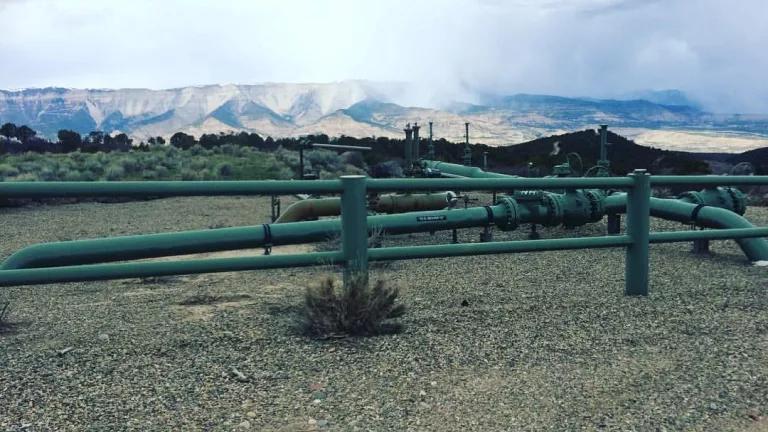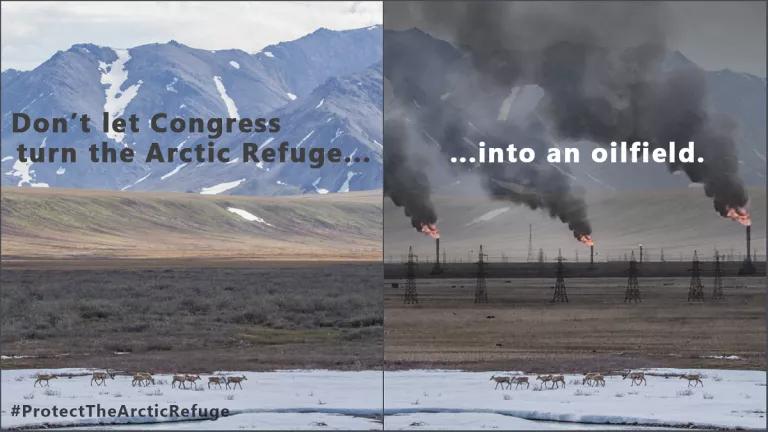Eliminating Conservation as We Know It: A Budget Proposal
In March we wrote about the Trump administration’s “skinny budget” and how a proposed 12% cut to Department of Interior’s (DOI) 2018 Fiscal Year budget would be devastating to the hundreds of millions of acres of public lands and wildlife managed by this vital agency. The administration issued the more exhaustive budget blueprint yesterday. Unfortunately, the additional details that have been provided by the FY2018 budget proposal does nothing to assuage those prior concerns. To put it mildly, the chosen cuts to the Interior Department are draconian and punitive. Rather than a 12% across-the-board cut that would impact every agency project equally—which has been the prevailing convention in Congress—the Trump administration is primarily focused on undercutting Interior’s traditional obligations to protect our nation’s natural heritage. Instead, the administration’s budget favors the dirty: increasing funding for fossil fuels by emphasizing development over even the most basic protections for public lands and wildlife. The following are some of the more notable lowlights:
Conservation Management Will Be Devastated
- The National Park Service’s (NPS) budget will be cut by 13%.
- The administration is proposing a reduction of 4,000 Interior Department full time staff.
- The Bureau of Land Management (BLM) will seek a 26% cut to its Resource Protection program. This program is central to the BLM mission, focused on ensuring that the 245 million acres of federal land and the 600 million acres of subsurface lands under its supervision are properly protected. Furthermore, the Land Management program, that oversees the daily function of BLM will also be severely cut by 17%.
- The administration is seeking an 86% cut in BLM’s Conservation Land Acquisition program. This is coordinated with a desired 84% overall reduction in funds dedicated to conservation acquisition under the Land and Water Conservation Fund.
- Management of national monument and national conservation areas will see a 24% reduction.
Fossils First, Climate Last
- The administration outrageously proposes to open the Arctic National Wildlife Refuge to oil and gas drilling.
- The budget elevates onshore fossil fuel development on federal lands over other permitted activities, seeking a 14%, or $23.9 million increase in BLM’s onshore fossil fuels program.
- The coal reclamation fund, focused on ensuring that coal communities have the resources necessary to properly reclaim and mitigate for the damage caused by past coal mining activities, would be practically shuttered due to a proposed 94% cut.
- Despite the tremendous economic success the BLM has seen deploying renewable energy on federal lands over the last decade, the administration is proposing to cut the renewable energy permitting program in order to pay for increases in the fossils program.
- The budget would embargo an existing requirement that agencies assess and account for the greenhouse gas emissions associated with permitted activities. The budget would also forbid DOI from assessing the impacts and costs associated with the emission of carbon from permitted activities.
The (Even More) Absurd
- To estimate revenue from opening the Arctic Refuge to drilling, the budget relies on a wildly optimistic projection made almost two decades ago, when energy markets were quite different than what they are today. Still, it assumes doing so would only generate $1.8 billion in revenue over 10 years.
- The budget projects a 64% increase in collected oil and gas fees. Presumably the BLM is projecting a similar increase in oil and gas permitting overall, but the budget document does not shed any light on how the administration arrived to the notion that permitted oil and gas extracting will more than double in the next year in contravention of current market trends.
- The Interior Department’s budget summary is quick to take credit for the economic value that the agency provides local communities, particularly based on the revenue sharing that is provided to state and county governments. But the budget is slated to eliminate those benefits for renewable, geothermal energy on BLM lands by eliminating the share of royalties currently given to local governments. This is troubling given that geothermal deployment has been a resounding success in the West. The elimination of this revenue sharing arrangement—which last year brought $3.2 million in revenues to rural communities in the West—will perversely drive rural communities to embrace less sustainable oil and gas drilling over geothermal projects, given the lack of a parallel proposal to rob local communities of revenue owed to them via oil and gas drilling.
- Programs that oversee mining and livestock grazing on BLM lands will not see any cuts.
- Funding for the National Park Service’s Heritage Partnership program—an initiative championed by President Reagan, where the Park Service partners with charities to protect key national landmarks and natural areas while saving taxpayers money—is proposed to be defunded.
- Similarly, the Challenge Cost Share program, which works with “cooperative partners,” such as scientists who usually volunteer their services to help the DOI initiate conservation and science projects that the agency cannot do on their own (for services that are not typically covered by federal budget outlays), is also slated for elimination.




